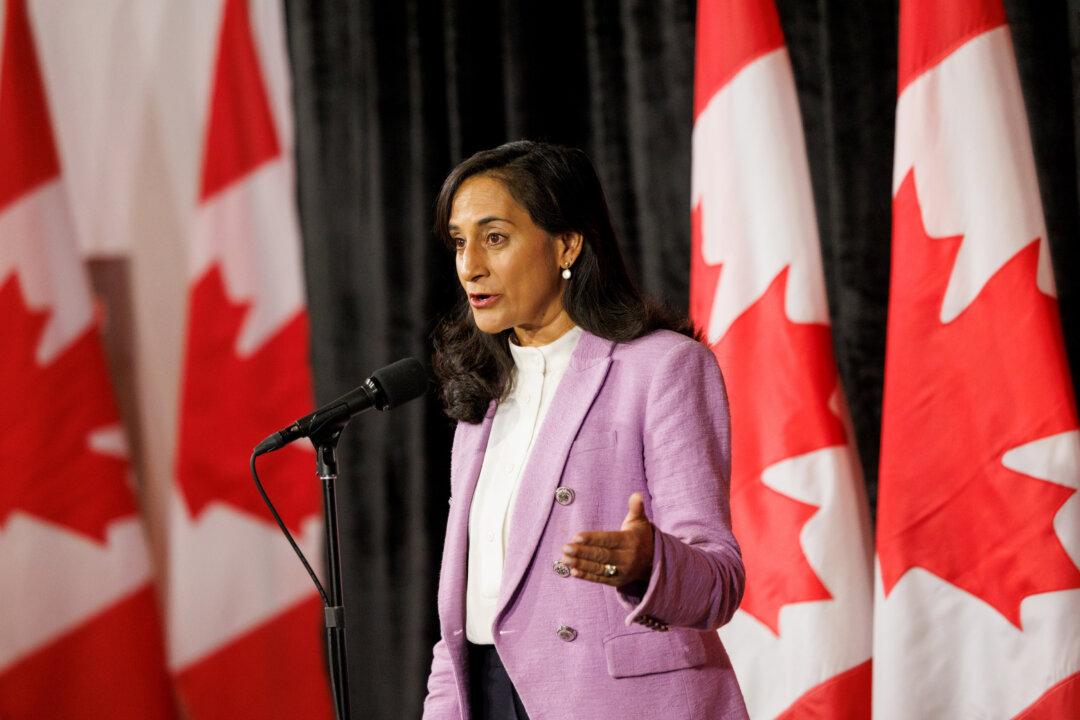The federal government will establish a working group to examine low economic productivity and a stagnating standard of living in Canada, Treasury Board President Anita Anand has announced.
Anand said she was immediately striking the working group, but details were scarce on its composition, timetables, and objectives. The working group will have the expertise to evaluate productivity issues in the private and public sectors and have representatives from across the country, she said Aug. 27, speaking from the margins of the Liberal cabinet retreat in Halifax. Unions will also be engaged.
“We know that Canada has strong economic markers, a triple-A credit rating, the lowest net debt to GDP ratio in the G7, historically low unemployment,” said Anand. “At the same time, we know that there is more work to do on GDP per capita, or productivity.”
Ottawa has been using the net debt-to-GDP ratio measure to tout the strength of the Canadian economy. Canada ranks first in the G7 with 14.6 percent, while the U.S. is at 100.7 percent and the UK at 99.6 percent, according to data from the International Monetary Fund.
When calculating gross government debt as a percentage of GDP, however, Canada falls behind both the UK and Germany. It also ranks 16th from the bottom among world countries.
GDP per capita is typically used to measure the standard of living. IMF data shows Canada was in a virtual tie with the United States from 2008 to 2013, reaching approximately US$53,000. After 2013 there was decoupling, with per-person GDP falling and stagnating in Canada while the U.S. mostly kept its upward trajectory.
Canada’s current GDP per capita stands at US$54,870 whereas the United States is at US$85,370. Euro area countries follow a similar trajectory as Canada, with average per-person GDP currently at US$45,830.
Bank of Canada Senior Deputy Governor Carolyn Rogers said in March that the country’s “poor record on productivity” constituted an emergency.Anand said the productivity issue has already been studied and that her government has sought to address it by investing taxpayer dollars in fields like artificial intelligence.
“That is one way in which we are seeking to address the issue of productivity, to ensure that businesses can become more efficient,” she said, adding that removing red tape is another area her government has focused on.
While productivity is one side of the equation, the muted growth of GDP per capita in recent years has been attributed by some to Canada’s rapid population growth.
National Bank economists said the country is now in a “population trap,” a phenomenon usually found in emerging economies.
“Our population is growing so fast that we do not have enough savings to stabilize our capital-labour ratio and achieve an increase in GDP per capita,” they wrote in a report published in January.
The Bank of Canada noted in its July Monetary Policy Report the impact of newcomers on inflation in the short term, causing inflationary pressures in some sectors, including housing.
Addressing the topic of immigration and its impact on GDP per capita, Anand said Canada’s economy has grown significantly in the last decades because of immigration.
“At the same time, we do see the need to examine our immigration policy to ensure that we have the levels of immigrants where they need to be,” said the minister.
On Aug. 26, Employment Minister Randy Boissonnault announced there would be a tightening of rules in the low-wage stream of the Temporary Foreign Workers Program, which is expected to reduce numbers by 65,000. There were more than 1.3 million work permit holders in the second quarter of 2024, according to Statistics Canada.
Ottawa has also modified its international student visa program in recent months in the hopes of curbing high temporary immigration numbers amid pressure on housing and services, as well as abuse of the system.




